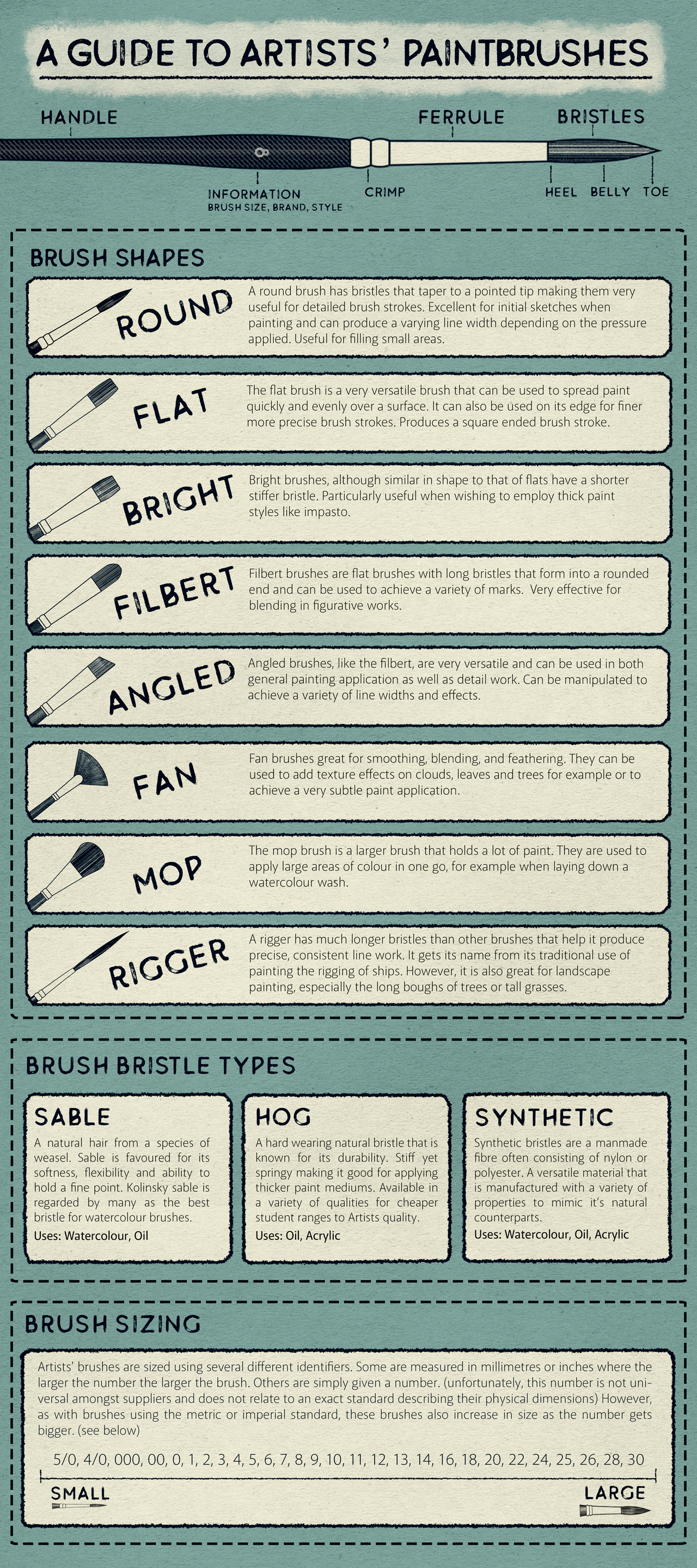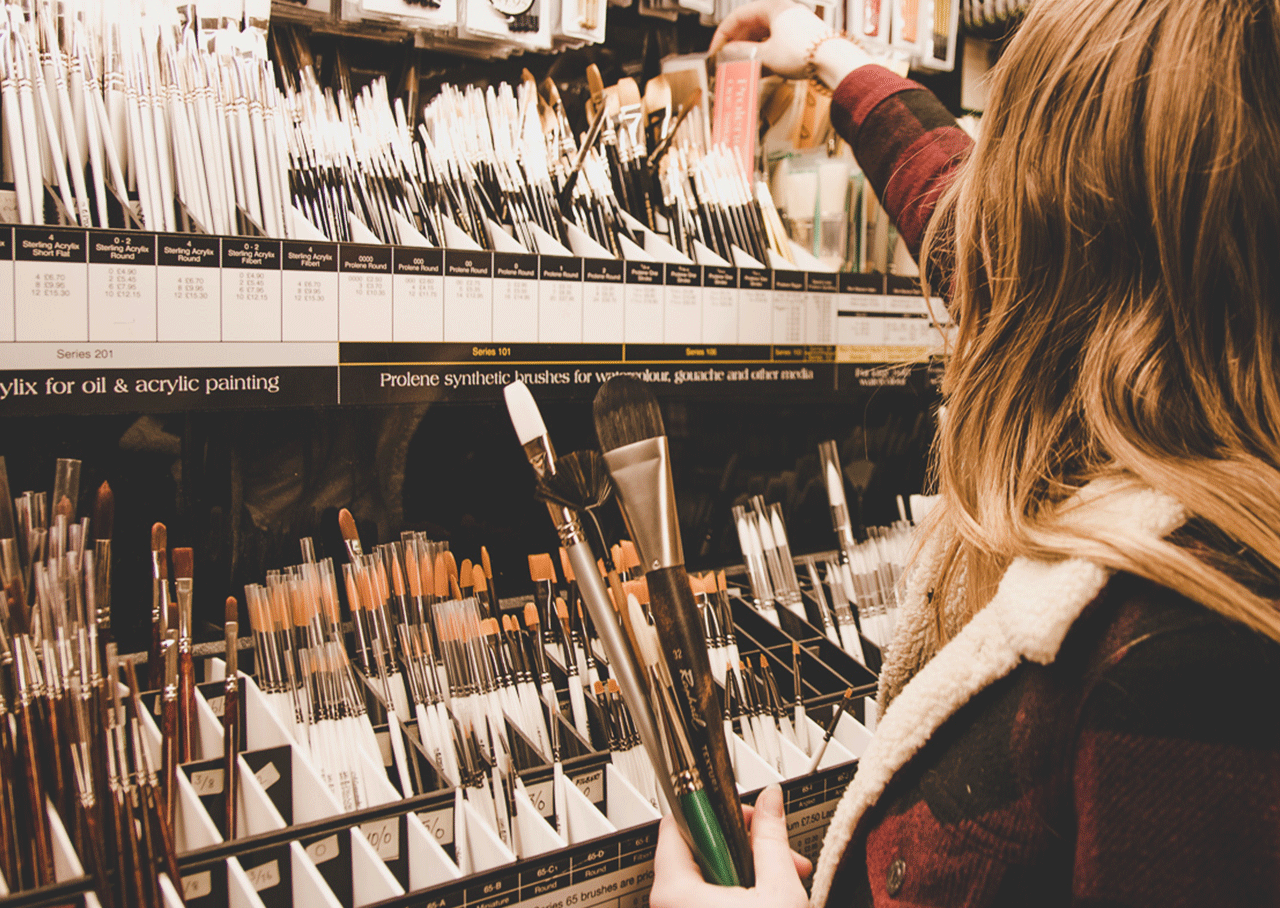Sometime after the invention of the finger and the perils of fingerpainting became too much, early man took it upon themselves to create a device that did away with the need to wash their hands once they had finished adorning their cave walls. Thus the paintbrush was born! I jest but the reality is that humans have been using paintbrushes from as early as the Paleolithic Period, about 2,500,000 years ago, to apply pigment. This is evidenced by cave paintings found in Spain and France. The technology has come a long way since what I can only imagine was a few hairs plucked from one's own head or last nights dinner lashed to a stick. With the advancement in technology has come the development of many different brush types from a multitude of different manufacturers. These brush types vary greatly in there shape, size, materials and uses. To the beginner artist or heck, even the most established professional things can get a little confusing when it comes to choosing the right paintbrush. What do you use for your watercolour painting, oil painting or acrylic painting projects? Help is at hand! Enter this handy print out and keep poster that details everything you need to know when selecting or purchasing your next paintbrush.
FREE DELIVERY ON ALL ORDERS OVER £40
- Painting
- Student Ranges
- Surfaces
- Drawing
- Easels
- Graphics & Studio
- Craft & Gift Ideas
- Architecture
- Gift vouchers
- Gallery
- Our store
- Home
- Painting
- Student Ranges
- Surfaces
- Drawing
- Easels
- Graphics & Studio
- Craft & Gift Ideas
- Architecture
- Gift vouchers
- Artist gallery
Fast Delivery
Free Delivery on all orders over £40.00
Easy Returns
Up to 100 days
Friendly Customer Service
Knowledgeable staff ready to help
Independent Business
Selling Art Supplies since 1981




